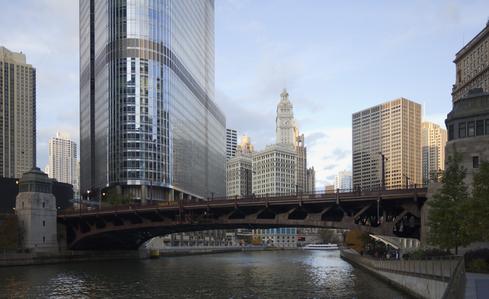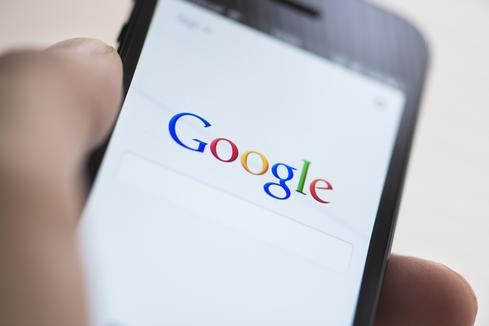Advanced wireless networks at Chicago's Trump International Hotel and Tower enable guests to stream movies from smartphones to 65" TVs.


10 Essential Google Apps For iPhone Users
10 Essential Google Apps For iPhone Users (Click image for larger view and slideshow.)
Life on the road can be tough. The modern traveler wants to settle into a quiet hotel room with half-a-dozen mobile devices and a huge screen to display those devices' contents. High-end hotels aim to give those modern travelers precisely what they want.
The Trump International Hotel and Tower Chicago is a boutique hotel with 339 suites and guest rooms. In a phone interview, Jerry Chang, director of IT at the hotel, said that his IT group saw a significant change in guests' devices and expectations in the last few years. "The guest expectation of what they receive has changed," he said. "We wanted to create the right environment for the BYOD trend we've seen. Everyone is traveling with two or three devices, and they want to spend time on those rather than the traditional entertainment vehicle."
When streaming content from a smartphone, travelers don't want to see the results on a tiny television, so the Trump International has installed 65" WiFi-connected sets in every guest room. Chang says the way that guests will use those televisions today is fundamentally different from past patterns. "[Guests] want to utilize the TV as a medium to use personal content. They want to be able to stream their movies to the TV. They don't want to be tied to the small screen. They want to shift things to the large screen when they can."
To support guest video streaming, Trump International worked with WiFi vendor Zebra to install 802.11ac access points as part of an overall network management upgrade led by GuestTek, a company that specializes in broadband and interactive services for the hospitality industry. While a significant upgrade to the existing infrastructure, Chang said that it's not as though the previous equipment was legacy technology from the dawn of wireless networking. "This hotel opened its doors in January 2008, so the infrastructure was set up in 2007. At the time the de facto standard was 802.11g and we installed autonomous APs through the hotel," he said.
[ Data consumption is dramatically changing wireless networks, but there is a silver lining. Read The Wireless Perfect Storm. ]
Chang explained that the original infrastructure worked well with the way that travelers of the time used the network. "This was fine because guests weren't roaming. People were traveling with laptops and they tended to be fixed in location." He said that use patterns had shifted in several key ways. "As the time went on, people were using more phones and tablets, and we saw the smaller wireless radios [on user devices] that required us to pump more [radio frequency] into the rooms. We needed to be smarter with our RF," he said.
The changes to the hotel's WiFi infrastructure weren't confined to the guest rooms. Other upgrades have allowed for better networking for organizations that use the hotel's public areas and meeting spaces. "Part of our upgrade to Zebra was to refresh all the APs in the public space, as well as the meeting space. We've engaged Guest-Tek to provide tools that allow us to give much more flexibility in the meeting rooms, providing bandwidth caps and limits as well as personal SSIDs."
Upgrades to the hotel's wireless infrastructure were paired with upgrades to the backbone and connections to the Internet in order to make sure all that guest video streaming could happen with minimal appearances of the dreaded "buffering ..." message. Chang said that the Internet connection's bandwidth was dramatically increased. "We've exponentially increased our bandwidth over time. We started with three T1s and are now looking at 600 megabits for guest consumption," he said. [Author's note: A T1 connection is 1.544 Mbps.]
All of this new video streaming capability just rolled out in the last month, and the guests are still figuring out how everything works. "The biggest feedback is on the physical aspects -- the 65" TVs. As far as the product offerings, not as much. They're curious; they use the device pairing from the personal handheld to the TV. They play with it, but I don't know that they're fully engaged yet," he said. There's plenty for the guests to explore. "We do offer enhanced feature sets, allowing guests to use their own Hulu or Netflix [account], so they can bring their own personal content -- they're not tied to paying for movies on the hotel entertainment system. I don't know how many guests have used it, but we're very proud of the offering."
As proud as he is, Chang is under no illusion that the current infrastructure is the last word in the hotel's wireless network. In an email after our interview, Chang wrote, "[O]ur WAPs are Wave 1, but guest data-rate demands are exponentially increasing, so we would be looking toward 802.11ad or beyond (802.11ax?) to meet the demands of our clientele." The point is simple: "It's an evolving thing. People are switching to mobile entertainment and away from traditional entertainment. I see that continuing, and that's why we're going to continue working on providing the same level of services that our guests are used to at home."
About the Author(s)
You May Also Like







